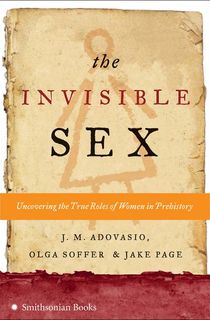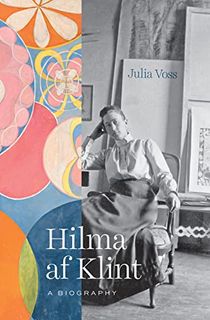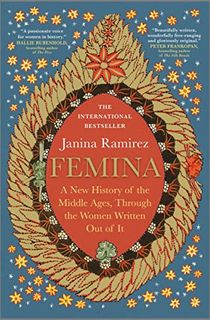Each March, Women’s History Month gives us the opportunity to recognize the impact of women on history and celebrate some of their greatest achievements; in particular, those whose stories have traditionally been overlooked. There is still so much to learn about the extraordinary contributions made by women in every field of human endeavor, so it is pleasing to see the increasingly wide range of excellent books now available on this topic. Here are eight fascinating women-oriented history books which make perfect reading for Women’s History Month or any time of year.

Lady at the O.K. Corral
Ann Kirschner’s Lady at the O.K. Corral relates the extraordinary story of Josephine Marcus, who was for nearly 50 years the common-law wife of the 19th-century lawman, Wyatt Earp. The title refers to the legendary 1881 gunfight at the OK Corral between the Earp brothers and the Clanton gang, in which three outlaws were shot dead.
Kirschner’s “splendid” (New York Times) biography is meticulously researched and for the first time brings to the forefront the story of Josephine’s extraordinary journey from aspiring middle-class New York actress to pioneering frontierswoman. In so doing, the author also offers a new perspective on the American West, one of the most remarkable eras in US history.

The Only Woman in the Room
At the end of World War II, Beate Sirota Gordon was working as a Japanese interpreter for the US Government in Tokyo. As such, she was assigned to the American team charged with constructing a new Japanese Constitution in just a week. She was the only woman on the team and still just 22 years of age, yet courageously seized the moment to write anti-discrimination laws into the new constitution, particularly relating to women’s equal rights, which were unprecedented then and are still regarded as innovative today.
In her compelling memoir, The Only Woman in the Room, Gordon provides her own insight into these extraordinary events as well as some of her other most notable achievements, including her pioneering work in introducing Asian culture to Western audiences.

Mistress of the Elgin Marbles
Debate has raged for years regarding the rightful home of the Elgin Marbles, which are currently on display in London’s British Museum. This collection of Ancient Greek sculptures takes its name from early 19th-century British diplomat, the 7th Earl of Elgin, who has become infamously associated with their removal from the Parthenon in Athens.
Less well-known today is the part played by Elgin’s wealthy first wife, Mary Nesbit, who provided much of the funding required to transport these archaeological treasures to England. As was so often the case at the time, this charismatic and accomplished woman was largely written out of history following the couple’s later scandalous divorce, but now author Susan Nagel has utilized Mary’s own letters to bring her story back to life.
Acclaimed by Kirkus Reviews as “required reading for anyone interested in cultural history”, Nagel’s biography reveals many other previously disregarded aspects of Mary’s life, including her part in introducing a smallpox vaccine to the Middle East and her negotiations with Napoleon to secure her husband’s release from imprisonment in Paris.

Women in the Middle Ages
First published in the 1970s, Women in the Middle Ages adopted the then-revolutionary approach of focusing specifically on women from the medieval era in order to illustrate the gradual evolution of the female role in society over the course of a millennium. The authors chose women from a selection of different periods, locations, and backgrounds, all of whom came to prominence in the male-dominated world of the Middle Ages. These include a 12th-century Abbess (Hildegarde of Bingen), a Queen of France (Blanche of Castile) and a 13th-century Flemish textile worker who sued her employer (Agnes li Patiniere).

The Invisible Sex
In The Invisible Sex, two of the world’s leading experts on perishable artifacts from the prehistoric period, J.M. Adovasio and Olga Soffer, have joined forces with leading science writer, Jake Page, to re-examine the role played by women in the prehistoric world. Using exciting new archaeological research, the three authors challenge many longstanding misconceptions regarding the contribution made by women to early human society, revealing how they played a central role in the development of language, social skills, essential items such as clothing, and even early agriculture.

A Woman of No Importance
Sonia Purnell’s multi-award winning A Woman of No Importance relates the incredible true-life story of Virginia Hall, the Baltimore socialite who became one of the most effective Allied secret agents during World War II. This courageous woman was badly injured in a hunting accident during the early 1930s, meaning that from then onwards she used a prosthetic leg, but she overcame discrimination relating both to her gender and to her disability to play a pivotal role behind enemy lines in France with the UK’s clandestine Special Operations Executive.
Such was her contribution to the cause of the French Resistance that the Gestapo once described her as “the most dangerous of all Allied spies”. Hall famously refused to talk about her top-secret wartime work even years after the event, but Parnell’s meticulous research has uncovered plenty of previously hidden fascinating details to reveal the true extent of this inspirational woman’s heroism and resourcefulness during World War II.

Hilma af Klint: A Biography
This biography by Julia Voss about the enigmatic early 20th-century Swedish artist, Hilma af Klint, was originally published in Germany, but was subsequently translated into English by Anne Posten. As part of her research process, Voss taught herself Swedish so that she could study af Klint’s extensive personal archive in its original language.
A self-declared mystic and clairvoyant, af Klint was dismissed by the mainstream art world for far too long as little more than an eccentric. However, her artwork has enjoyed a huge surge in popularity in recent years, not least because of Voss’ compelling argument that the Swedish painter’s significant contribution to the development of the early abstract art movement should no longer be overlooked.

Femina: A New History of the Middle Ages, Through the Women Written Out of It
Janina Ramirez’s groundbreaking book reveals the extraordinary extent to which the history of the Middle Ages was manipulated by the efforts of medieval male officials to remove women’s names from official documents and records. The title of her book refers to the word “femina” (Latin for “woman”) which frequently appeared alongside such deleted entries.
In an attempt to redress the balance, Ramirez has undertaken her own research into some of the most influential women of medieval times by looking at other sources, including their own writings and possessions. She brings these remarkable women’s stories to life in Femina, demonstrating that contrary to the image portrayed in traditional records, women in the Middle Ages did exert power and influence.
This post is sponsored by Open Road Media. Thank you for supporting our partners, who make it possible for The Archive to continue publishing the history stories you love.



